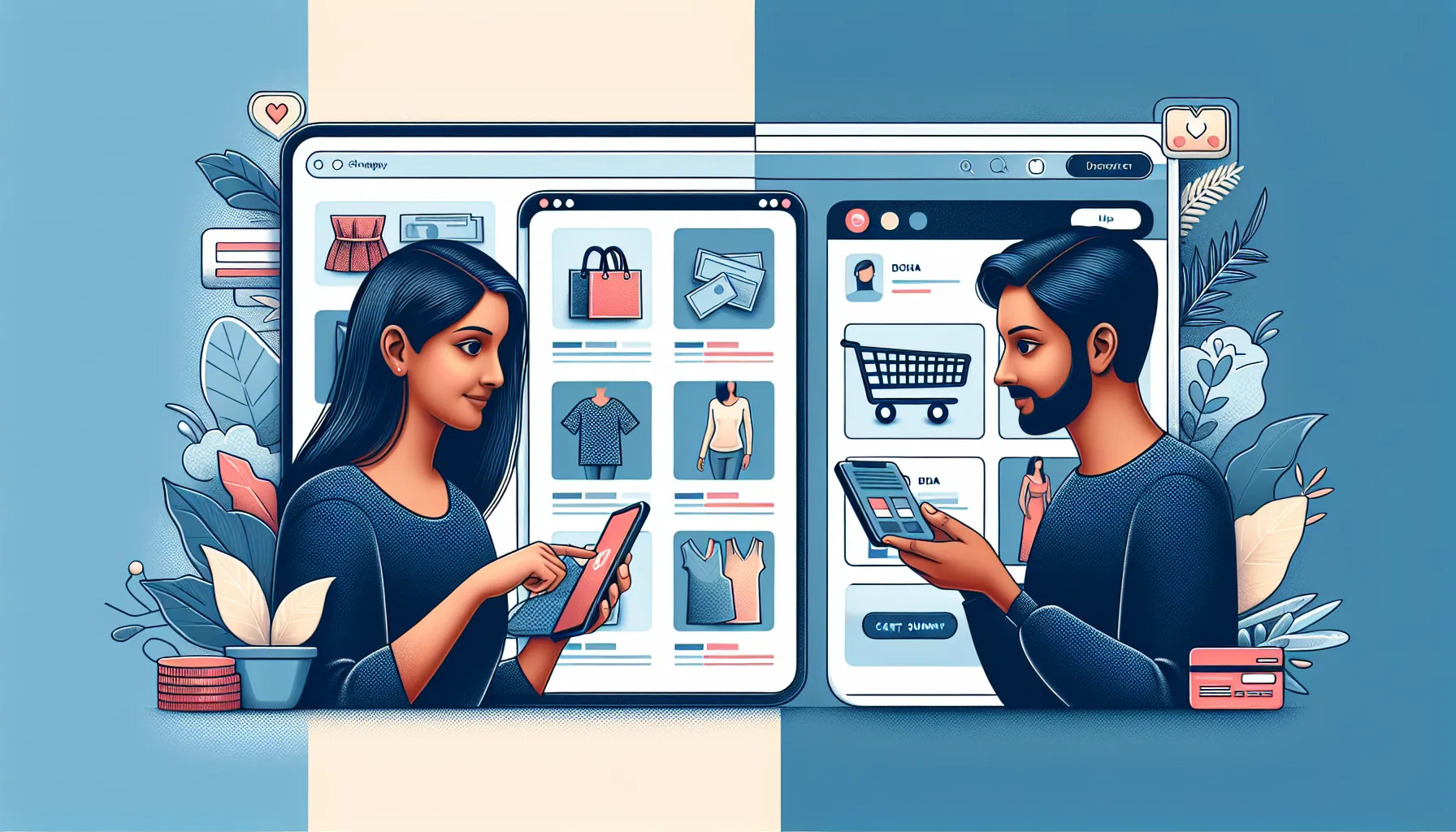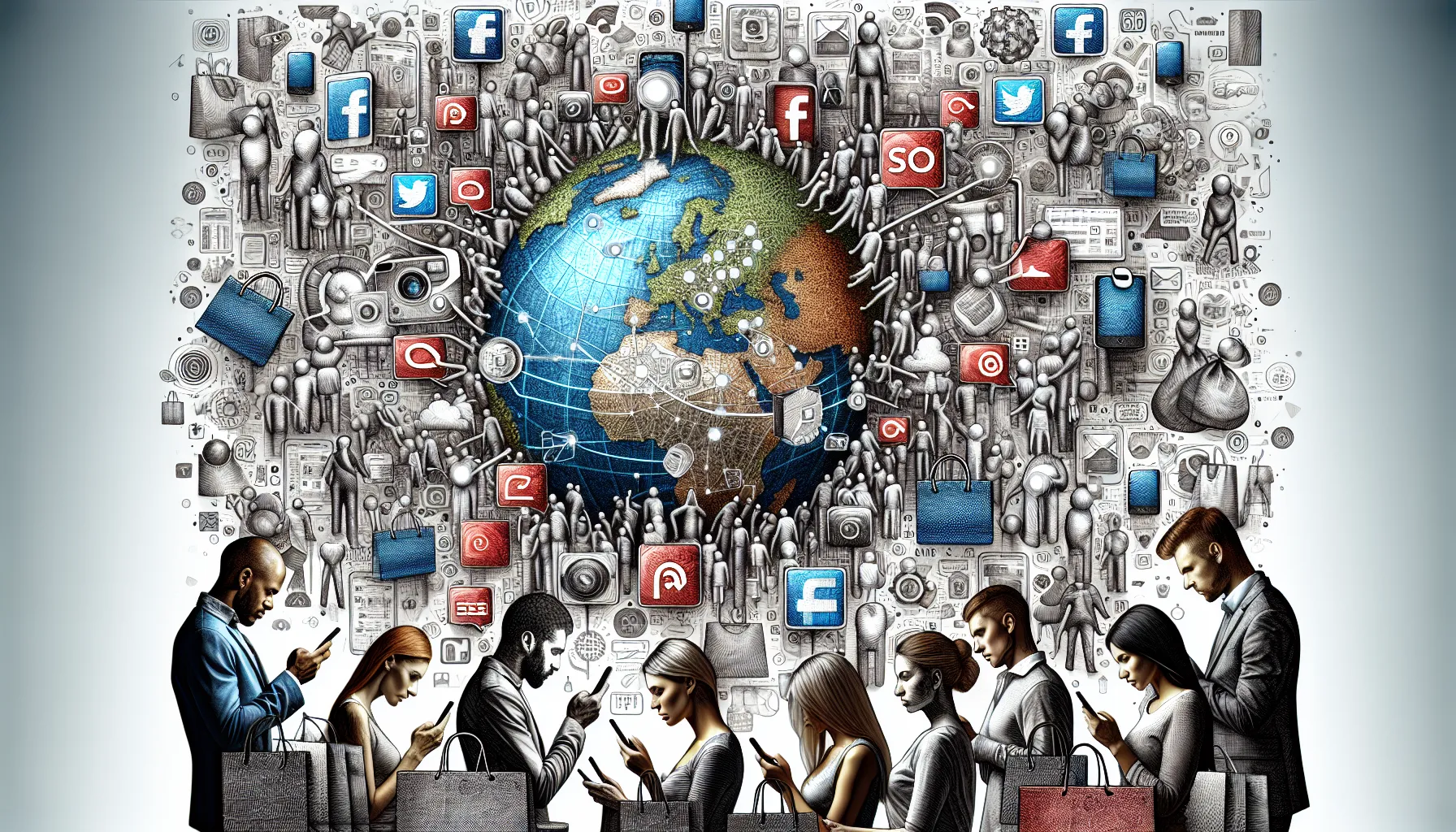Welcome to our IELTS Reading practice test focused on the impact of social media on changing consumer expectations. This comprehensive test will help you prepare for the IELTS Reading section by providing three passages of increasing difficulty, along with a variety of question types typically found in the actual exam.
Nội dung bài viết
- Introduction
- Passage 1 (Easy Text)
- The Rise of Social Media in Consumer Culture
- Questions 1-5
- Questions 6-10
- Passage 2 (Medium Text)
- The Transformation of Consumer Expectations in the Social Media Era
- Questions 11-15
- Questions 16-20
- Passage 3 (Hard Text)
- The Multifaceted Impact of Social Media on Consumer Expectations: A Critical Analysis
- Questions 21-26
- Questions 27-33
- Questions 34-40
- Answer Key
- Passage 1
- Passage 2
- Passage 3
Introduction
In today’s digital age, social media has become an integral part of our lives, significantly influencing consumer behavior and expectations. This IELTS Reading practice test explores the multifaceted impact of social media on consumer expectations, covering topics such as instant gratification, personalized experiences, and the power of user-generated content.
Passage 1 (Easy Text)
The Rise of Social Media in Consumer Culture
Social media has revolutionized the way consumers interact with brands and make purchasing decisions. Platforms like Facebook, Instagram, and Twitter have become powerful tools for businesses to reach their target audience and for consumers to voice their opinions about products and services.
One of the most significant changes brought about by social media is the expectation of instant gratification. Consumers now expect quick responses to their queries and complaints, often within hours or even minutes. This shift has forced companies to adapt their customer service strategies to meet these new demands.
Moreover, social media has created a culture of constant connectivity, where consumers are always plugged into the latest trends and product releases. This has led to a more informed and discerning customer base, with individuals often researching products extensively before making a purchase.
The power of influencers has also emerged as a key factor in shaping consumer expectations. Social media personalities with large followings can significantly impact purchasing decisions, often swaying their audience towards certain brands or products.
 influencer-marketing
influencer-marketing
Lastly, the rise of user-generated content has given consumers a platform to share their experiences with products and services. This peer-to-peer communication has become a trusted source of information for many shoppers, often holding more weight than traditional advertising.
Questions 1-5
Do the following statements agree with the information given in the passage?
Write:
TRUE if the statement agrees with the information
FALSE if the statement contradicts the information
NOT GIVEN if there is no information on this
- Social media has had no impact on how quickly consumers expect responses from companies.
- Consumers are now more informed about products due to social media.
- Influencers have become less important in shaping consumer opinions.
- User-generated content is considered more trustworthy than traditional advertising by many consumers.
- All businesses have successfully adapted their customer service strategies to meet new consumer demands.
Questions 6-10
Complete the sentences below.
Choose NO MORE THAN TWO WORDS from the passage for each answer.
- Social media has created a culture of __ __ where consumers are always connected to the latest trends.
- Consumers now expect __ __ when they make queries or complaints on social media.
- The rise of social media has led to a more __ and __ customer base.
- Social media personalities with large followings are known as __.
- __ __ __ has become a trusted source of information for many shoppers.
Passage 2 (Medium Text)
The Transformation of Consumer Expectations in the Social Media Era
The advent of social media has fundamentally altered the landscape of consumer expectations, creating a paradigm shift in how individuals interact with brands and make purchasing decisions. This transformation is characterized by several key factors that have reshaped the traditional consumer-brand relationship.
Firstly, the democratization of information has empowered consumers like never before. Social media platforms have become vast repositories of product reviews, user experiences, and brand interactions, allowing potential customers to access a wealth of information at their fingertips. This abundance of data has led to more discerning consumers who expect transparency and authenticity from brands.
Secondly, the concept of personalization has taken center stage. Social media algorithms have conditioned users to expect tailored content and recommendations. This expectation has spilled over into the realm of consumer goods and services, with customers now demanding personalized experiences and products that cater to their individual preferences.
The rise of social commerce has also played a significant role in reshaping consumer expectations. The seamless integration of shopping features within social media platforms has blurred the lines between content consumption and purchasing. This convergence has fostered an expectation for frictionless buying experiences, where consumers can move from discovery to purchase with minimal effort.
Moreover, social media has amplified the importance of brand values and social responsibility. Consumers are increasingly aligning themselves with brands that reflect their personal values and demonstrate a commitment to social and environmental causes. This shift has placed pressure on companies to not only deliver quality products but also to be active participants in addressing societal issues.
The acceleration of trends is another notable impact of social media on consumer expectations. The viral nature of content on these platforms has led to the rapid dissemination of new styles, products, and ideas. Consequently, consumers now expect brands to be agile and responsive, quickly adapting to emerging trends and preferences.
Lastly, the cult of immediacy fostered by social media has heightened expectations for rapid gratification. From instant responses to customer service inquiries to same-day delivery options, consumers have come to expect swift action and resolution in all aspects of their interactions with brands.
Questions 11-15
Choose the correct letter, A, B, C, or D.
-
According to the passage, which of the following is NOT a key factor in reshaping consumer expectations?
A) Democratization of information
B) Personalization of experiences
C) Rise of social commerce
D) Increase in traditional advertising -
The text suggests that social media has led consumers to expect:
A) Less transparency from brands
B) More personalized products and services
C) Slower customer service responses
D) Fewer options for product customization -
How has social media affected the relationship between brand values and consumer expectations?
A) It has made brand values less important to consumers
B) It has increased consumer interest in brands’ social responsibility
C) It has decreased the pressure on companies to address societal issues
D) It has made consumers less likely to align with brands based on values -
The passage indicates that the “cult of immediacy” has resulted in:
A) Consumers being more patient with brands
B) A decrease in same-day delivery options
C) Higher expectations for quick responses and actions from brands
D) Slower dissemination of new trends -
Which of the following best describes the overall impact of social media on consumer expectations, according to the passage?
A) It has had minimal effect on how consumers interact with brands
B) It has fundamentally altered the consumer-brand relationship
C) It has only affected younger generations of consumers
D) It has primarily impacted luxury brand consumers
Questions 16-20
Complete the summary below.
Choose NO MORE THAN TWO WORDS from the passage for each answer.
Social media has transformed consumer expectations in several ways. The 16)__ __ __ has given consumers access to vast amounts of product information. Customers now expect 17)__ experiences tailored to their preferences. The integration of shopping features within social platforms has created an expectation for 18)__ __ experiences. Brands are now expected to demonstrate 19)__ __ and commitment to social causes. Finally, the 20)__ __ __ has led consumers to expect rapid responses and swift action from brands in all interactions.
Passage 3 (Hard Text)
The Multifaceted Impact of Social Media on Consumer Expectations: A Critical Analysis
The pervasive influence of social media on consumer expectations has engendered a complex and multifaceted transformation in the marketplace, necessitating a nuanced examination of its far-reaching implications. This paradigm shift extends beyond mere alterations in purchasing behaviors, fundamentally reshaping the very fabric of consumer-brand relationships and the broader socio-economic landscape.
At the crux of this transformation lies the democratization of information, a phenomenon that has irrevocably altered the power dynamics between consumers and brands. Social media platforms have become veritable repositories of user-generated content, encompassing a spectrum of experiences, opinions, and critiques. This proliferation of peer-to-peer communication has engendered a more discerning and empowered consumer base, one that gravitates towards authenticity and transparency in brand interactions.
 e-commerce-experience
e-commerce-experience
The advent of social media has also catalyzed a shift towards hyper-personalization, with consumers increasingly expecting tailored experiences that resonate with their individual preferences and values. This expectation extends beyond mere product recommendations, encompassing personalized content, targeted marketing, and bespoke customer service interactions. The omnipresence of sophisticated algorithms and data analytics has further fueled this trend, enabling brands to craft highly customized consumer journeys.
Moreover, the rise of social commerce has blurred the traditional boundaries between content consumption and transactional activities. This convergence has fostered an expectation for seamless, frictionless experiences that transcend the conventional dichotomy between online and offline channels. Consumers now anticipate a fluid ecosystem where discovery, engagement, and purchase are seamlessly integrated, often within the confines of a single platform.
The amplification of brand values and corporate social responsibility represents another significant paradigm shift precipitated by social media. The heightened visibility of brand actions and policies has compelled companies to not only articulate but also demonstrably embody their espoused values. Consumers increasingly align themselves with brands that reflect their personal ethos and actively contribute to societal and environmental causes, thereby elevating the importance of purpose-driven marketing and authentic corporate citizenship.
Furthermore, the acceleration of trend cycles facilitated by social media has engendered a culture of rapid innovation and adaptation. The viral nature of content dissemination on these platforms has compressed the lifecycle of trends, necessitating agility and responsiveness from brands to remain relevant. This phenomenon has given rise to the concept of “micro-trends” and has challenged traditional product development and marketing timelines.
The cult of immediacy fostered by social media has also permeated consumer expectations across various touchpoints. From instantaneous customer service responses to on-demand product availability, consumers have become accustomed to rapid gratification in their brand interactions. This shift has necessitated significant operational adaptations from companies, including the optimization of supply chains and the implementation of real-time engagement strategies.
Lastly, the emergence of social proof as a critical factor in decision-making processes cannot be overstated. The omnipresence of ratings, reviews, and social media endorsements has elevated the importance of peer validation in shaping consumer perceptions and expectations. This phenomenon has democratized brand advocacy, with user-generated content often wielding more influence than traditional marketing efforts.
In conclusion, the impact of social media on consumer expectations represents a profound and multifaceted transformation that extends far beyond superficial changes in purchasing behaviors. It encompasses a fundamental shift in the balance of power between consumers and brands, a recalibration of expectations regarding personalization and immediacy, and a reimagining of the role of corporations in society. As this digital revolution continues to unfold, it behooves both brands and consumers to navigate this evolving landscape with mindfulness and adaptability.
Questions 21-26
Complete the sentences below.
Choose NO MORE THAN TWO WORDS from the passage for each answer.
-
The __ __ brought about by social media has changed the power dynamics between consumers and brands.
-
Consumers now expect __ __ that are tailored to their individual preferences and values.
-
The rise of social commerce has led to an expectation for __, __ experiences in consumer interactions with brands.
-
Social media has elevated the importance of __ __ marketing and authentic corporate citizenship.
-
The viral nature of content on social media has led to the concept of __ __ in product trends.
-
The __ __ fostered by social media has led consumers to expect rapid gratification in their brand interactions.
Questions 27-33
Do the following statements agree with the claims of the writer in the passage?
Write:
YES if the statement agrees with the claims of the writer
NO if the statement contradicts the claims of the writer
NOT GIVEN if it is impossible to say what the writer thinks about this
- Social media has only had a minor impact on consumer expectations.
- The democratization of information has made consumers more discerning and empowered.
- Personalization in consumer experiences is limited to product recommendations.
- Social commerce has created a clear separation between content consumption and purchasing activities.
- Brands can ignore corporate social responsibility without consequences in the age of social media.
- The acceleration of trend cycles has made it easier for brands to plan long-term marketing strategies.
- Social proof has become less important in consumer decision-making processes.
Questions 34-40
Complete the summary below.
Choose NO MORE THAN TWO WORDS from the passage for each answer.
The impact of social media on consumer expectations is a 34)__ __ transformation that goes beyond simple changes in buying habits. It has led to a 35)__ __ __ between consumers and brands, with consumers now having access to vast amounts of information. This has resulted in a demand for 36)__ __ in all brand interactions. Social media has also driven expectations for 37)__ experiences tailored to individual preferences. The rise of social commerce has blurred the lines between content consumption and purchasing, creating a need for 38)__, __ experiences. Additionally, consumers now expect brands to demonstrate 39)__ __ and contribute to societal causes. The 40)__ __ of content on social media has compressed trend lifecycles, requiring brands to be more agile and responsive.
Answer Key
Passage 1
-
FALSE
-
TRUE
-
FALSE
-
TRUE
-
NOT GIVEN
-
constant connectivity
-
instant gratification
-
informed, discerning
-
influencers
-
user-generated content
Passage 2
-
D
-
B
-
B
-
C
-
B
-
democratization of information
-
personalized
-
frictionless buying
-
social responsibility
-
cult of immediacy
Passage 3
-
democratization of information
-
hyper-personalization
-
seamless, frictionless
-
purpose-driven
-
micro-trends
-
cult of immediacy
-
NO
-
YES
-
NO
-
NO
-
NO
-
NO
-
NO
-
multifaceted
-
fundamental shift
-
authenticity, transparency
-
hyper-personalized
-
seamless, frictionless
-
corporate citizenship
-
viral nature
This IELTS Reading practice test has provided you with valuable experience in tackling various question types and difficulty levels related to the impact of social media on changing consumer expectations. Remember to practice time management and develop strategies for each question type to improve your performance in the actual IELTS exam.
For more IELTS preparation resources and tips, check out our articles on how social media is reshaping corporate branding and the impact of social media on global consumer behavior.



